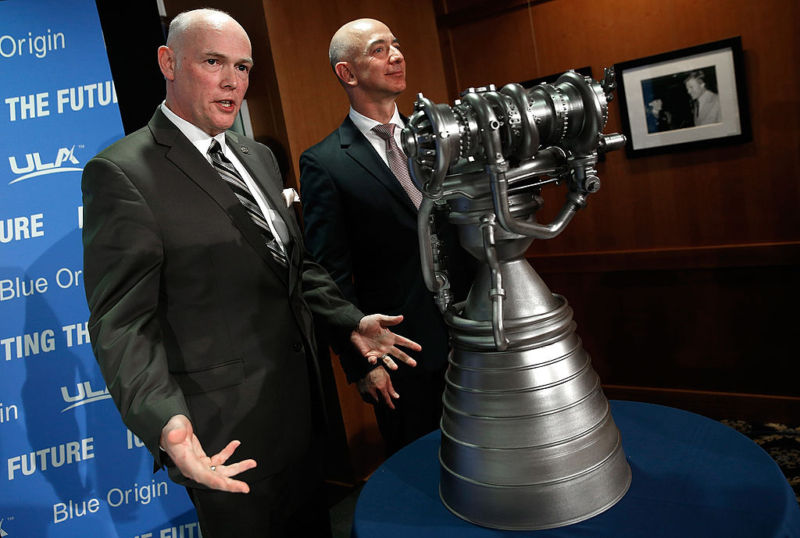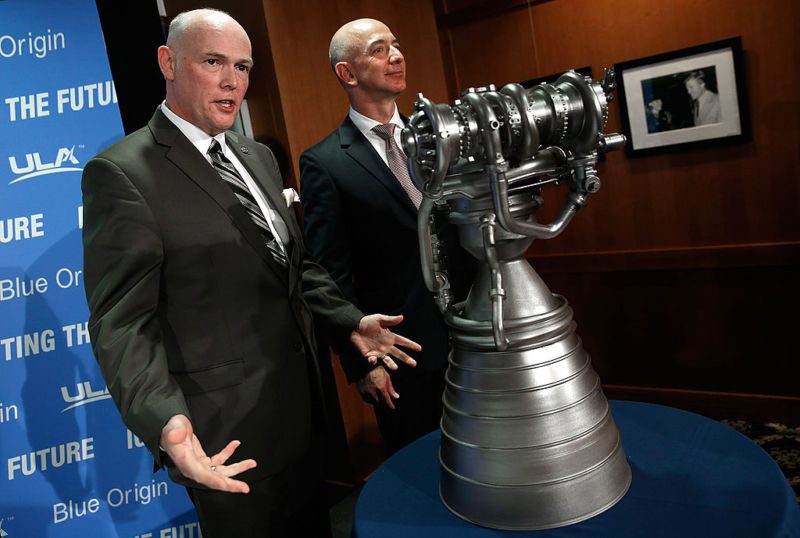Sources say prominent US rocket-maker United Launch Alliance is up for sale
The potential sale of ULA comes with many questions for a buyer.
Published by Eric Berger – 3/1/2023, 5:50 PM

One of the world’s most important rocket companies, United Launch Alliance, may be sold later this year.
The potential sale has not been disclosed publicly, but three sources confirmed to Ars that potential buyers have been contacted about the opportunity. These sources said a deal is expected to be closed before the end of this year and that investment firm Morgan Stanley and consulting firm Bain & Company are managing the transaction.
The sale of United Launch Alliance, or ULA as it is known within the industry, would mark the end of an era that has lasted for nearly two decades. The company was officially formed in 2005 as part of a deal brokered by the US government, ensuring the military had access to both Atlas and Delta rockets to put national security satellites into space. To form ULA, Lockheed Martin and Boeing merged their launch businesses into a single company, each taking a 50 percent stake.
This union was profitable for both parent companies, as ULA held a monopoly on launching national security missions and, effectively, NASA science probes. In return for 100 percent mission success, ULA received large launch contracts and an approximately $1 billion annual subsidy from the US Department of Defense to maintain “launch readiness.”
In response to a request for comment, Boeing released the following statement: “Consistent with our corporate practice, Boeing doesn’t comment on potential market rumors or speculation about financial activities.”
Lockheed Martin issued a nearly identical response: “Consistent with our corporate practice, Lockheed Martin doesn’t comment on potential market rumors or speculation about financial activities.”
The emergence of SpaceX in the early 2010s with the increasingly reliable Falcon 9 rocket started to disrupt this profitable arrangement. SpaceX sold the Falcon 9 rocket at a substantial discount to ULA’s Atlas V and Delta IV rockets. The company also successfully sued the US government to allow the Falcon 9 rocket to compete for national security missions, and SpaceX launched its first one in 2017.
In recent years, SpaceX has come to dominate United Launch Alliance in terms of cadence. By the end of 2022, the upstart was launching as many rockets each month as ULA launched during a calendar year. During the last four years, in fact, SpaceX has landed more rockets than ULA has launched during its existence.
However, ULA still holds a prominent place in the global launch industry, and there will likely be no shortage of suitors.
The Colorado-based company has significant assets. As early as May, ULA will debut its new heavy-lift rocket, Vulcan, which may close some of the gap in terms of price competitiveness with SpaceX. For Vulcan, ULA has an agreement with the US military to launch 60 percent of its national security payloads from 2023 to 2027, and it will likely continue to be successful in this area. ULA has also won a commercial contract to launch 38 missions for Amazon’s Project Kuiper satellite megaconstellation. Finally, ULA has sizable and valuable facilities in Colorado, Alabama, and Florida, and it has strong political capital in those states and others.
The following companies may (or may not—this is a speculative list) be among the suitors for ULA as the sale proceeds later this year.
- One of the parent companies, either Lockheed or Boeing, could buy the other out. Lockheed being on the purchasing end seems more likely, given that it has recently made strategic acquisitions in the launch industry, including taking a stake in ABL Space Systems.
- Amazon is likely to be interested. The company owned by Jeff Bezos would have intimate knowledge of ULA’s business after signing the Project Kuiper launch agreement and may decide it’s better to purchase the company outright than buy services. This would give Amazon the priority access to Vulcan launches it needs to ensure the Kuiper constellation is launched in a timely manner. It would also strengthen Amazon’s ties to the Department of Defense.
- Blue Origin may also be interested. This is another company owned by Jeff Bezos, but sources said there is a firewall between Blue Origin and Amazon. Blue Origin also won a share of Project Kuiper launches, 12, with its New Glenn rocket. However, there are some questions about how quickly New Glenn can be brought into commercial service, and in buying ULA, Blue Origin could consolidate its share of Kuiper missions and earn guaranteed funding from the Department of Defense. The company would also “save” money on Vulcan launches because it could provide BE-4 rocket engines at cost.
- Other potential bidders include Northrop Grumman, which has an interest in national security and provides solid rocket motors for Vulcan; L3Harris, which is already purchasing engine-maker Aerojet Rocketdyne; a private equity firm like the industry saw with AE Industrial Partners’ investment in Firefly Aerospace; or even a technology company like Apple seeking to develop its own space constellation for communications purposes.
The potential sale of ULA comes with many questions for a buyer. Foremost among them is likely to be the long-term viability of the traditional space company at a time when SpaceX has taken the dominant position in the global launch industry. Additionally, there are other US competitors coming up as well, including Blue Origin, Rocket Lab, and Relativity Space. None of these are a near-term threat to ULA, but in five to 10 years, one or more of those companies could have a fully reusable rocket priced substantially below that of Vulcan.
Another important factor in ULA’s viability is its need for investment. Over the last two decades, the parent companies have tended to pull profits out of ULA rather than investing in the development of new technology. Vulcan, for example, was developed largely with money from the US military. The Department of Defense supported the development of Vulcan’s engines and solids and provided development grants worth $967 million directly to ULA. To become competitive in the new era of commercial launch, a new owner will likely need to free ULA to innovate—and provide the funding to do so.
Updated/maj. 01-03-2023
Vues : 0


